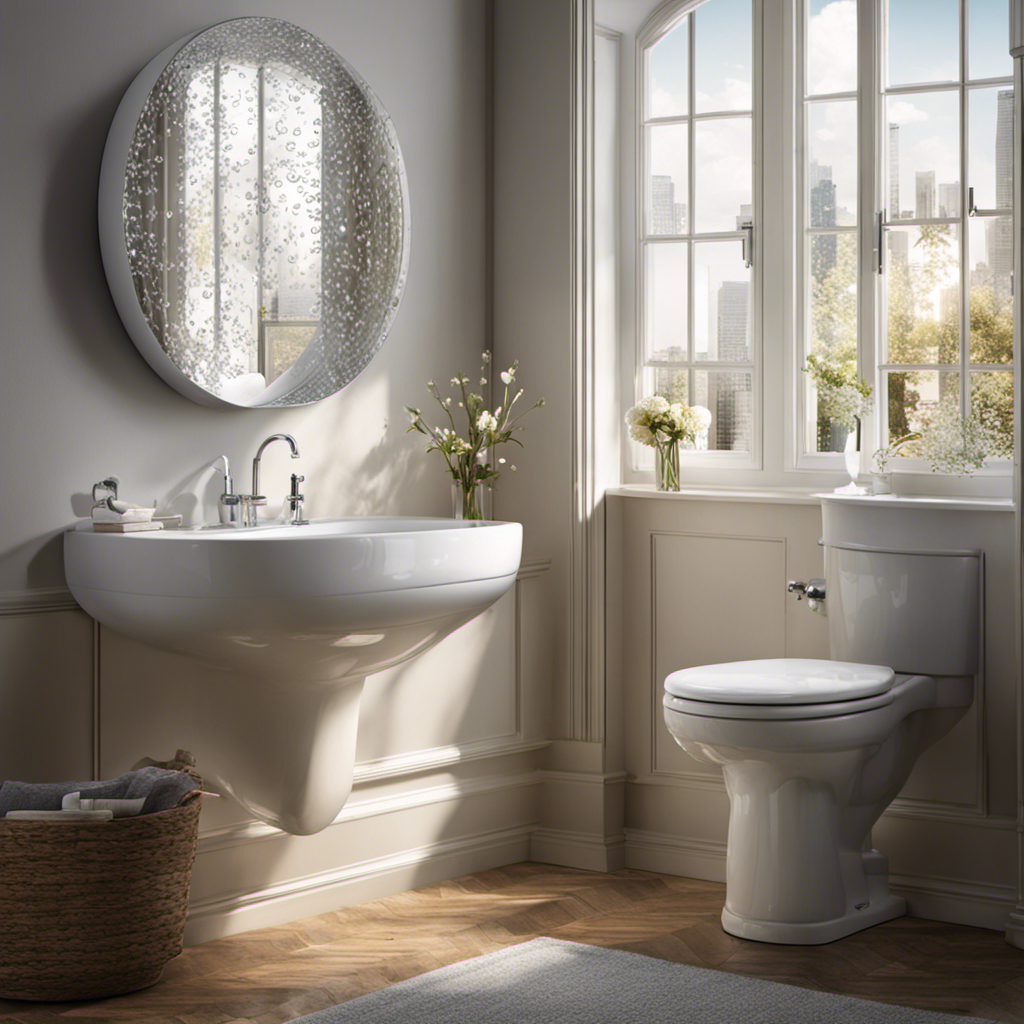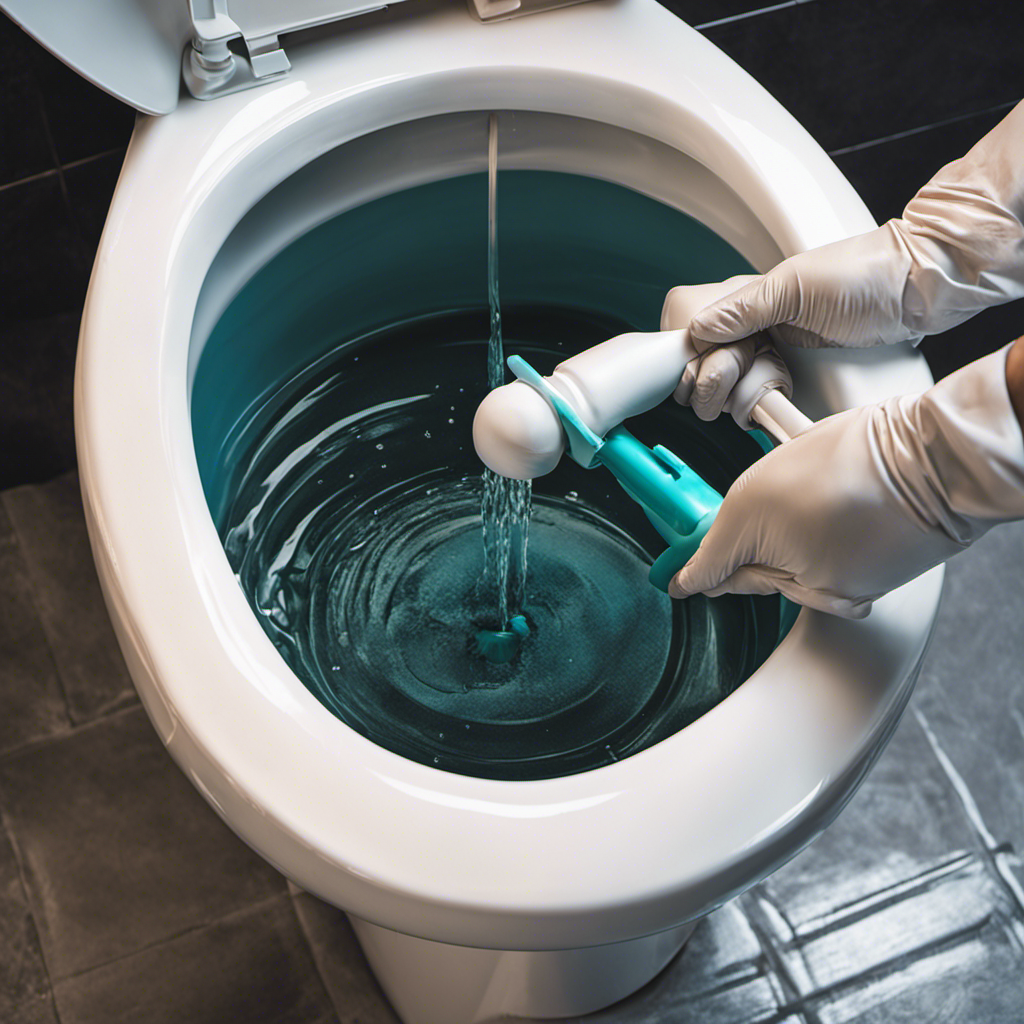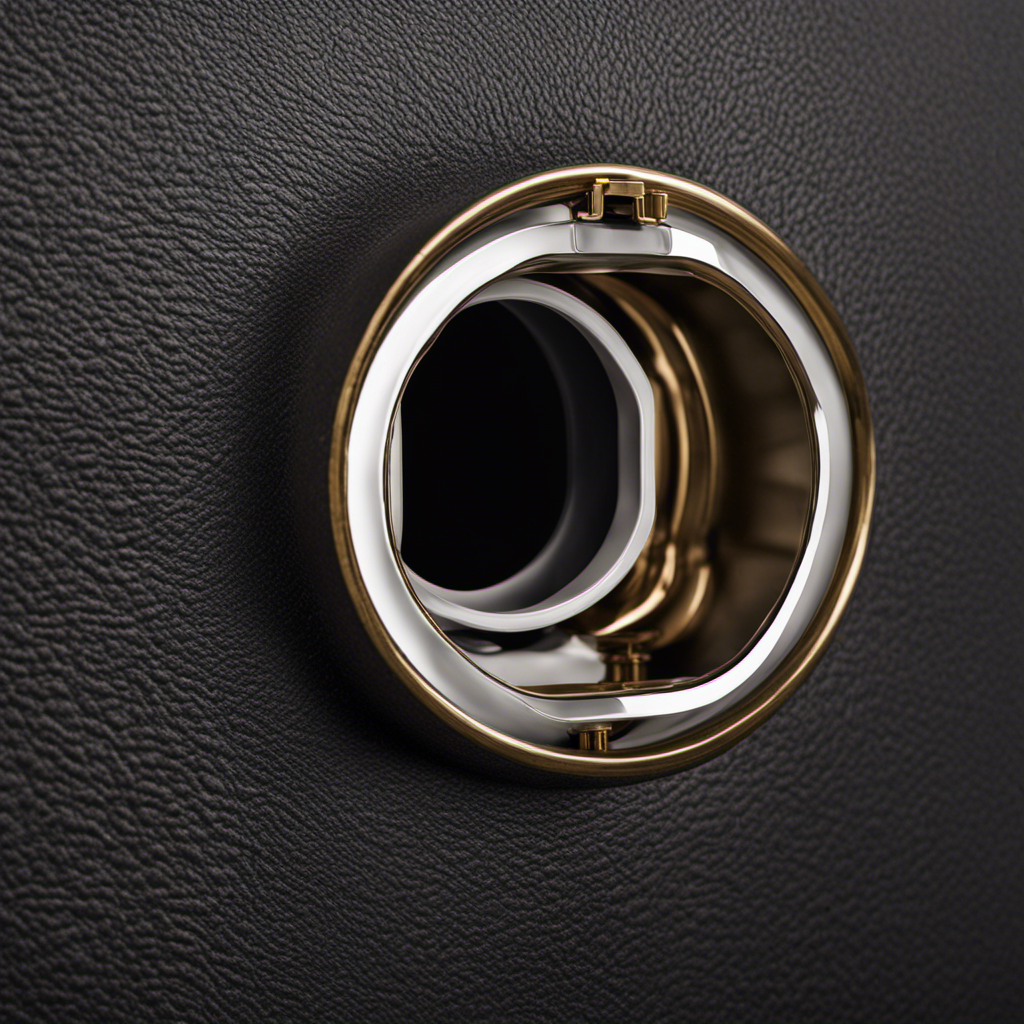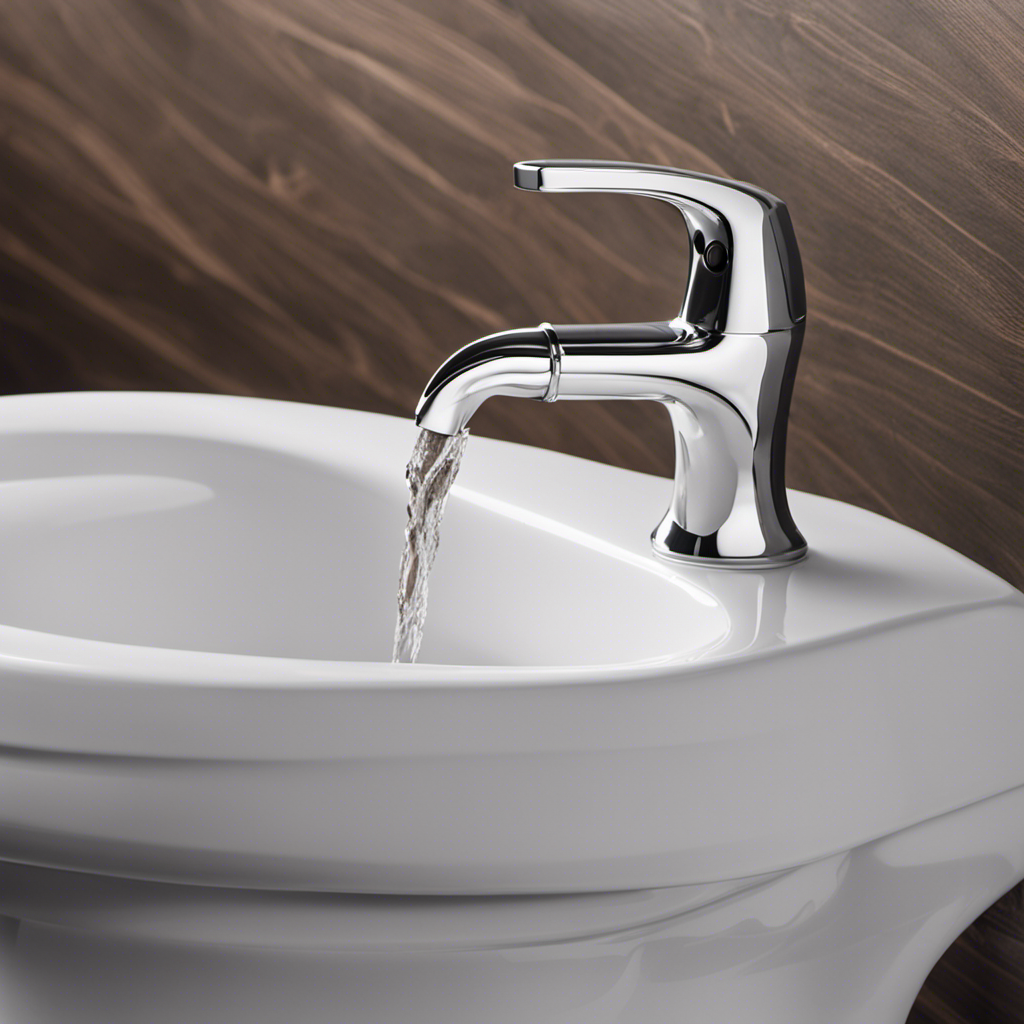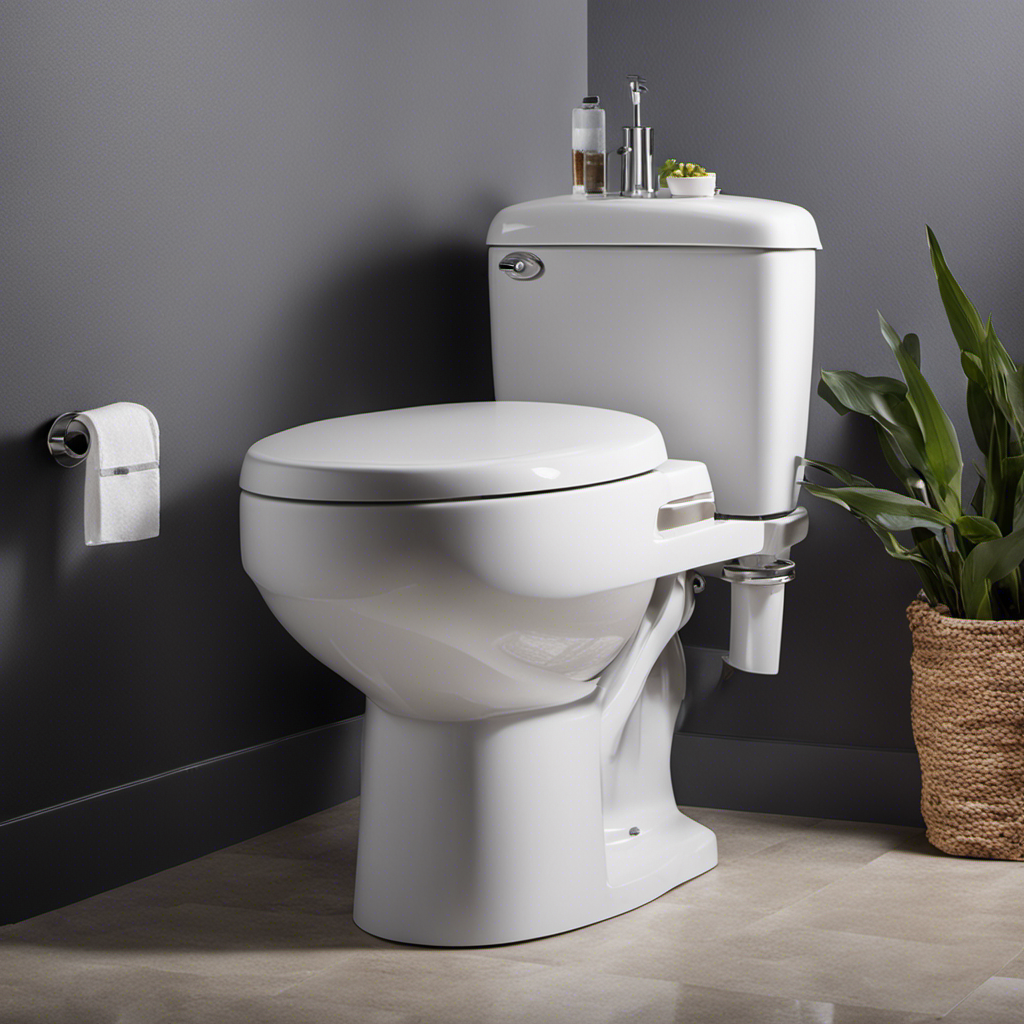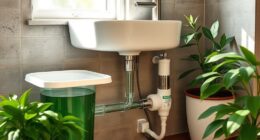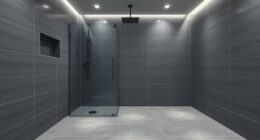Ever noticed something peculiar happening to your toilet when the sink drains? It’s as if a mysterious bubble party is happening right under your nose.
Well, fear not! In this article, I will delve into the potential causes of these toilet bubbles and shed light on the common plumbing issues that may be at play.
Let’s get down to the nitty-gritty of how sink drainage affects toilet performance and explore some troubleshooting tips and preventive measures to keep those bubbles at bay.
Key Takeaways
- Potential causes of toilet bubbles when the sink drains include problems with toilet plumbing, blockages or restrictions in the toilet drain, venting issues in the plumbing system, imbalanced air pressure, and negative pressure created when the sink drains.
- Common plumbing issues to consider when dealing with toilet bubbles include a clogged or blocked vent pipe, negative pressure causing a bubbling effect, improper venting, and other plumbing issues. Regular plumbing maintenance is important to prevent these issues.
- Solutions for potential causes of toilet bubbles include clearing blockages in the vent pipe using specialized tools, installing a vent pipe extension or repairing the existing vent pipe, ensuring proper venting by checking vent pipe size and placement, and consulting a professional plumber for a comprehensive evaluation and appropriate solutions.
- The drainage system in the house is interconnected, and a decrease in water pressure when the sink drains slowly can affect toilet performance and lead to bubble formation. The size of the drain can also impact the formation of bubbles.
Potential Causes of Toilet Bubbles
If your toilet bubbles when the sink drains, it could be due to a few potential causes.
One possible reason for this issue is a problem with the toilet plumbing. When the sink drains, it creates a negative pressure in the plumbing system. If there is a blockage or restriction in the toilet drain, air bubbles can be forced up through the toilet bowl.
Another cause could be related to air pressure. If there is a venting issue in the plumbing system, the air pressure can become imbalanced. This can cause air to escape through the toilet bowl when the sink drains.
It is important to address these potential causes promptly to prevent further damage to the plumbing system and ensure the proper functioning of both the sink and toilet.
Common Plumbing Issues to Consider
One common plumbing issue to consider is when the water in the toilet starts bubbling as water gets drained from the sink. This can be a sign of a clogged or blocked vent pipe in the plumbing system. The vent pipe is responsible for allowing air to enter the plumbing system, preventing a vacuum from forming and ensuring proper drainage. When the vent pipe is blocked, it can cause a negative pressure, leading to the bubbling effect in the toilet. To resolve this issue, professional plumbing services should be sought. They can conduct a thorough inspection of the plumbing system, identify the cause of the problem, and provide the necessary repairs or maintenance. Regular plumbing maintenance is essential to prevent such issues and ensure the proper functioning of your plumbing system.
| Potential Causes | Solutions |
|---|---|
| Clogged vent pipe | Clear the blockage in the vent pipe using specialized tools |
| Negative pressure | Install a vent pipe extension or repair any damage in the existing vent pipe |
| Improper venting | Ensure proper venting by checking the vent pipe size and placement |
| Other plumbing issues | Consult a professional plumber for a comprehensive evaluation and appropriate solutions |
How Sink Drainage Affects Toilet Performance
When your sink drains slowly, it can negatively impact the performance of your toilet. This is because the drainage system in your house is interconnected, and any issues with one component can affect the others.
One of the impacts of water pressure on toilet bubbles is that when the sink drains slowly, it can cause a decrease in water pressure in the pipes. This decrease in pressure can lead to the formation of bubbles in the toilet bowl when it is flushed.
Additionally, the relationship between drain size and toilet bubble formation is important to consider. If the sink drain is smaller in size compared to the toilet drain, it can create a bottleneck effect, causing an increase in water pressure and the formation of bubbles in the toilet.
Therefore, it is crucial to address any slow sink drainage issues promptly to avoid these negative impacts on your toilet’s performance.
Troubleshooting Tips for Toilet Bubbles
You can troubleshoot toilet bubble issues by checking the water pressure in your pipes. If the water pressure is too high, it can cause air to get trapped in the pipes and create bubbles in the toilet bowl.
Here are some possible solutions for toilet bubbles:
-
Inspect the water pressure regulator: Ensure that it is functioning properly and adjust it if needed.
-
Check for clogged drains: Signs of a clogged drain causing toilet bubbles include slow draining sinks or showers and gurgling noises when using these fixtures.
-
Clean the vents: Blocked vent pipes can lead to air pressure imbalances and cause bubbles in the toilet.
Preventive Measures to Avoid Toilet Bubbles
Inspect the water pressure regulator to ensure it’s functioning properly and make any necessary adjustments. This is an important step in preventing toilet bubbles and maintaining proper toilet venting.
The water pressure regulator controls the flow of water into your plumbing system, and if it’s not functioning correctly, it can cause issues such as toilet bubbles.
Start by locating the water pressure regulator, which is usually near the main water supply line. Use a pressure gauge to measure the water pressure and compare it to the recommended range for your plumbing system.
If the pressure is too high, adjust the regulator to reduce it. Regularly checking and maintaining the water pressure regulator is an essential part of plumbing maintenance to prevent problems like toilet bubbles and ensure proper toilet venting.
Frequently Asked Questions
Can Toilet Bubbles Be a Sign of a More Serious Plumbing Problem?
Toilet bubbles can indicate a potential sewage backup or other serious plumbing issue. Common causes include clogged or damaged pipes, blocked vents, or a septic tank problem. Consult a plumber to diagnose and resolve the problem promptly.
Can Using Certain Cleaning Products in the Sink Cause Toilet Bubbles?
Using certain cleaning products in the sink can create a blockage in the drain, causing excessive pressure. This pressure can lead to toilet bubbles as the air tries to escape.
Can a Clogged Pipe in the Sink Affect the Toilet’s Flushing Performance?
Yes, a clogged sink can impact the toilet’s flushing performance. When the sink drain is obstructed, it can cause a decrease in water flow, leading to weak flushing or even clogging in the toilet.
Can a Faulty Toilet Flapper Valve Cause Toilet Bubbles When the Sink Drains?
A faulty toilet flapper valve can cause toilet bubbles when the sink drains. To troubleshoot this issue, check the flapper valve for any signs of damage or wear. Regular toilet flapper valve maintenance is important to prevent such problems.
Can a High Water Pressure in the Sink Lead to Toilet Bubbles?
When the sink drains, high water pressure can cause toilet bubbles. Troubleshooting toilet bubbles involves checking for clogs or blockages in the plumbing system. Exaggeration makes it enjoyable to find the root cause.
Conclusion
In conclusion, addressing toilet bubbles requires a thorough understanding of the underlying plumbing issues. By considering common problems such as clogs, venting issues, or sewer line blockages, you can troubleshoot and resolve the problem effectively.
It is crucial to recognize the impact of sink drainage on toilet performance, as this can contribute to the formation of bubbles. Implementing preventive measures, such as regular maintenance and proper disposal of waste, will help ensure a smooth, bubble-free toilet experience.
Just like a well-tuned engine purring flawlessly on a quiet country road.
